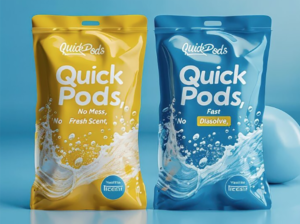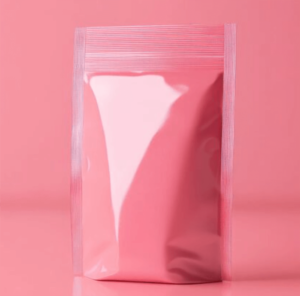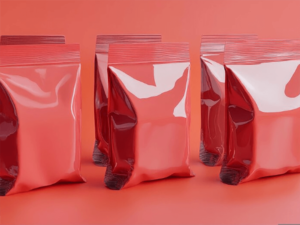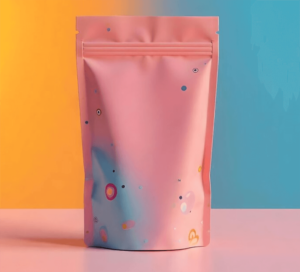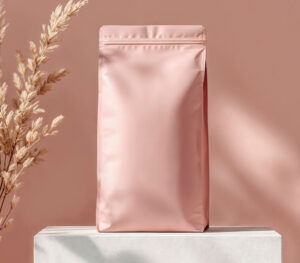What are the quality testing standards for food packaging bags?
The quality testing standards of food packaging bags mainly include the following aspects:
Appearance quality
Color: the layout and sample color consistent, uniform color, no obvious color differences between batches, no impurities.
Printing: the pattern can’t run, the trademark, pattern and text are clear and complete, no ink trailing, scattered ink, deinking and surface streaks; crystal dots, flower dots and black dots with a diameter greater than 1mm are not allowed to appear, and those less than or equal to 1mm are not more than 5 on the same package.
Surface requirements: slight or intermittent wrinkles are allowed, but not more than 5% of the total area.
Adhesive condition: the joints are firmly bonded, light pulling without cracking, no adhesion between the two layers. Requirements for the coil does not appear when moving between the film sliding.
Others: scratches, burns, bubbles, perforations, cracks, foreign objects attached, etc. are not allowed to exist, the inner two layers of the bag is easy to separate, there is no astringency, etc., the body of the bag is flat and no obvious warping, the film roll end surface unevenness is not greater than 3mm, no odor, no smell.
Size deviation
Length deviation: bag length ≥400, ±5mm; bag length <400, ±4mm.
Width deviation: ±2mm.
Thickness deviation: ±6%.
Heat sealing width deviation: ±10%.
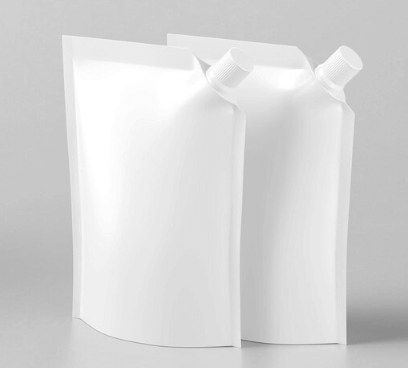
Physical properties
Tensile strength: reflecting the bag’s ability to resist tensile damage, different materials and structures of bags have different requirements for tensile strength, general longitudinal and transverse tensile strength ≥ 20N.
Elongation at break: ≥15%, reflecting the bag’s ability to elongate when stretching to break.
Peeling force: ≥0.6N between the inner layers of the film, to ensure that the composite film layers are firmly combined and not easy to separate.
Heat sealing strength: ≥7N/15mm, the strength of the heat sealing part should be enough to ensure the sealing effect.
Oxygen transmission rate: according to the characteristics of food and shelf life requirements, there are different indicators, such as ≤10g/(m²・24h・0.1Mpa).
Water vapor permeability: ≤5.8g/(m²・24h), preventing the entry of external moisture or the dissipation of moisture in the food.
Pressure resistance of the bag: <100g load 200N, 100 – 400g load 400N, 400 – 1000g load 600N, no leakage, no rupture.
Bag drop performance: <100g from a height of 800mm, 100 – 400g from a height of 500mm, 400 – 1000g from a height of 300mm drop, no leakage, no rupture.
Hygienic performance: It should meet the requirements of GB 9683 and other relevant standards, including evaporation residue (acetic acid, ethanol, hexane), potassium permanganate consumption, heavy metals, decoloration test and other indicators, to ensure that the bags will not cause contamination of the food, and will not have an adverse effect on human health.
Material requirements: in line with the contract and written agreement requirements, the raw materials used, additives to meet the relevant national quality requirements.
In addition, for different types of food packaging bags, there are some specific implementation standards, such as GB/T 41169 – 2021 “food packaging with paper aluminum plastic composite film, bags”, GB/T 41168 – 2021 “food packaging with plastic and aluminum foil composite film, bags”, T/SHBX 012 – 2022 “food packaging with cooking-resistant composite film, bags” and so on. In the international arena, the U.S. FDA and other organizations also have strict testing of the physical and mechanical properties of food packaging bags.

What are the differences in quality testing standards for different materials of food packaging bags?
The quality testing standards for food packaging bags made of different materials differ in the following aspects:
Appearance
Plastic bags: Requirements for uniform color, consistent with the sample color, no impurities. Printing pattern is clear and complete, no ink defects, allowing a slight wrinkle, but not more than 5% of the total area. Firm bonding at the seam, no adhesion, the bag body is flat, no scratches, burns, etc., the film roll end surface unevenness is not more than 3mm, no odor.
Paper bags: paper should be flat, no obvious creases, breaks, stains. Printing is clear and the color is even. For paper bags with coating or lamination, the coating or lamination should be even, without leakage, blistering, peeling and other phenomena.
Aluminum foil pouches: the surface should be flat and smooth, without wrinkles, scratches, pinholes and other defects. Aluminum foil layer should be firmly compounded with other materials without delamination or blistering. Printing pattern should be clear, colorful, and overprinting should be accurate.
Dimensional deviation
Plastic bags: length, width, thickness and heat sealing width have a certain range of deviation requirements, such as bag length ≥ 400, length deviation of ± 5mm; bag length < 400, length deviation of ± 4mm; width deviation of ± 2mm; thickness deviation of ± 6%; heat sealing width deviation of ± 10%.
Paper bags: Size deviation is generally required to be relatively small, such as length and width deviation is usually controlled between ±2mm – ±5mm, depending on the specifications and use of the bag. Quantitative (weight per unit area) also has strict requirements to ensure the strength and performance of the paper.
Aluminum foil bags: the dimensional deviation requirements are similar to those of plastic bags, but in terms of thickness, due to the relatively thin thickness of aluminum foil and high uniformity requirements, its thickness deviation is usually controlled within ±5%.
Physical properties
Plastic bags: need to test the tensile strength, elongation at break, peeling force, thermal strength, oxygen transmission rate, water vapor transmission, etc.. Such as tensile strength longitudinal and transverse ≥ 20N, elongation at break ≥ 15%, peeling force between the inner membrane ≥ 0.6N, heat bonding strength ≥ 7N/15mm, oxygen transmission rate ≤ 10g / (m ²・ 24h ¥ 0.1Mpa), water vapor transmission ≤ 5.8g / (m ² ¥ 24h).
Paper bags: Tensile index (longitudinal and transverse), tear index (longitudinal), breakage resistance index, water absorption, etc. are important indicators. For example, raw paper for candy packaging needs to be tested for tensile index and tear index, and raw paper for general packaging also needs to be tested for breakage resistance index and water absorption. For paper bags with special requirements, such as for packaging liquid food, but also need to carry out leakage test; for packaging hot food, need to carry out temperature resistance test.
Aluminum foil bags: In addition to similar tensile strength, elongation at break, heat bonding strength and other indicators with plastic bags, due to the good barrier properties of aluminum foil, its oxygen transmission rate and water vapor transmission requirements are lower, the general oxygen transmission rate of ≤ 5g/(m²・24h・0.1Mpa), water vapor transmission rate of ≤ 2g/(m²・24h). At the same time, the composite fastness of aluminum foil and other materials is required to be high to prevent delamination in the process of use.
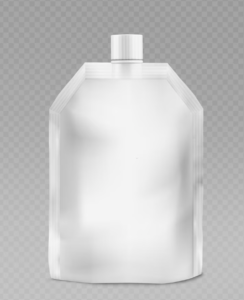
Hygienic performance
Plastic pouches: in accordance with GB 9683 and other relevant standards, test the evaporation residue (acetic acid, ethanol, hexane), potassium permanganate consumption, heavy metals, decolorization test and other indicators, but also to test the migration of specific migratory substances such as lead, cadmium, chromium, and other heavy metals, as well as the amount of migration / residual formaldehyde, phenol, aromatic amines, etc., and microbiological indicators, including total number of bacterial colonies, coliforms, molds and pathogens, and so on.
Paper packaging bags: according to GB 4806.8 – 2016 and other standards, test sensory requirements, arsenic, fluorescent substances, formaldehyde, heavy metals, etc.. The total migration test is based on the expected contact with the food type to select the appropriate food simulants and migration test conditions, such as 10% ethanol, placed at 70 ℃ for 2h for testing.
Aluminum foil pouches: follow the standards of GB 4806.9 – 2016 to test the content of heavy metals (lead, cadmium, chromium, mercury, etc.) and the migration amount of specific migrating substances. Microbiological indicators are also required to comply with relevant food safety standards.

